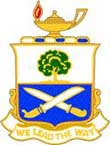hueglin
Posts: 297
Joined: 6/25/2006
From: Kingston, ON, Canada
Status: offline

|
The text below is the hypothetical background to the conflict in my scenario. The bold text is the hypothetical history changes, the other text is the actual historical events on which the changes are based.
The war begins in a similar manner to the First World War, with the assassination of the Austrian Archduke and the subsequent mobilizations and saber rattling. At the request of Russia, France and the U.S. close the Suez Canal to British and German traffic and demand that they guarantee non intervention in Serbia and withdraw support for Austria-Hungary. French and German troops skirmish in Alsace-Lorraine sparking cries of 'invasion' by both sides. Both countries implement their war plans. Britain demands that the Suez Canal be open to all traffic. France demands that Britain remain neutral. Hawks in the U.S. use this crisis as an excuse to gain reparations for the Alabama claims and formally demand the annexation of Canada. The U.S. fleet moves to blockade Canadian ports and the army mobilizes.
Political Background to the Anglo-German-Austro-Hungarian Alliance and the Franco-U.S.-Russian Alliance
Kaiser Frederick III does not die of throat cancer and moves Germany toward democratic reforms. He maintains strong ties with the British royal family which lead to an Anglo-German alliance. The Kaiserliche Marine is developed as a reponse to growing U.S. naval power after the Spanish American War.
Many historians have considered Frederick's early death particularly tragic, not only for himself but also for the German nation, and later the whole world. Frederick III was a liberal and a great admirer of the British constitution. Given a longer reign, it is possible he would have moved Germany towards a more liberal democratic course.[31] His father lived over 90 years and reigned for 27 years, making Frederick not able to rule for longer than expected. Great hopes were set on him. Opponents of the theory that Frederick would have liberalized Germany criticize his early life for complying with the policies of Bismarck and his father without giving stronger opposition, as well as continuing his family's strong military tradition. Frederick and Victoria were great admirers of Prince Albert of Saxe-Coburg-Gotha. They planned to rule as consorts, like Albert and Queen Victoria, and they planned to reform the fatal flaws in the executive branch that Bismarck had created for himself. The office of Chancellor responsible to the Kaiser would be replaced with a British-style cabinet, with ministers responsible to the Reichstag. Government policy would be based on the consensus of the cabinet. (Source: Wikipedia)
The Alabama Claims are not settled. Tension between the U.S. and Great Britain continues to escalate, over this and other issues, as radical politicans in the U.S. demand the ceding of Canada to the U.S. as compensation. U.S. threatens to annex Canada. Hawks in the government use the fear of British naval dominace to push through spending bill to increase the size of the U.S. Navy to protect U.S. shipping and ensure that the U.S. can isolate Canada from Britain and extend its influence through South America.
The Alabama claims were a diplomatic dispute between the United States and Great Britain that arose out of the U.S. Civil War. The peaceful resolution of these claims 7 years after the war ended set an important precedent for solving serious international disputes through arbitration, and laid the foundation for greatly improved relations between Britain and the United States.
The controversy began when Confederate agents contracted for warships from British boatyards. Disguised as merchant vessels during their construction in order to circumvent British neutrality laws, the craft were actually intended as commerce raiders. The most successful of these cruisers was the Alabama, which was launched on July 29, 1862. It captured 58 Northern merchant ships before it was sunk in June 1864 by a U.S. warship off the coast of France. In addition to the Alabama, other British-built ships in the Confederacy Navy included the Florida, Georgia, Rappahannock, and Shenandoah. Together, they sank more than 150 Northern ships and impelled much of the U.S. merchant marine to adopt foreign registry. The damage to Northern shipping would have been even worse had not fervent protests from the U.S. Government persuaded British and French officials to seize additional ships intended for the Confederacy. Most famously, on September 3, 1863, the British Government impounded two ironclad, steam-driven “Laird rams” that Confederate agent James D. Bulloch had surreptitiously arranged to be built at a shipyard in Liverpool.
The United States demanded compensation from Britain for the damage wrought by the British-built, Southern-operated commerce raiders, based upon the argument that the British Government, by aiding the creation of a Confederate Navy, had inadequately followed its neutrality laws. The damages discussed were enormous. Charles Sumner, Chairman of the Senate Foreign Relations Committee, argued that British aid to the Confederacy had prolonged the Civil War by 2 years, and indirectly cost the United States hundreds of millions, or even billions of dollars (the figure Sumner suggested was $2.125 billion). Some Americans adopted this argument and suggested that Britain should offer Canada to the United States in compensation. Such proposals were not taken seriously by British statesmen, but they convey the passion with which some Americans viewed the issue.
After years of unsuccessful U.S. diplomatic initiatives, a Joint High Commission meeting in Washington, D.C. during the early part of 1871 arrived at the basis for a settlement. The British Government expressed regret for its contribution to the success of Confederate commerce raiders. This agreement, dated May 8, 1871, and known as the Treaty of Washington, also established an arbitration commission to evaluate the merit of U.S. financial claims on Britain. In addition, the treaty addressed Anglo-American disputes over boundaries and fishing rights. The arbitration commission, which issued its decision in September 1872, rejected American claims for indirect damages, but did order Britain to pay the United States $15.5 million as compensation for the Alabama claims. (Source: U.S. State Department)
Britain becomes increasing involved in Mexican politics and economic development to support two goals. First, Britain is concerned that it has no national source of oil, which is needed for the new oil fueled engines of the latest naval vessels. Mexico is seen as a source of oil, after Persia. Second, with the continued tension between Britain and the U.S., and the vulnerability of Canada, many in the British government believe that developing Mexico as an ally will help take the pressure of the U.S.'s "northern ambitions". These moves have the opposite effect of increasing U.S. hostility toward Britain.
Through the Waters-Pierce Oil Co., Henry Clay Pierce had a virtual monopoly of marketing oil products imported from the United States before the discovery of oil in Mexico in 1900. To counter this monopoly, Porfirio Diaz decided to favour the oil and railroad interests of the British magnate, Weetman Pearson, who was created Lord Cowdray in 1910. Pearson formed a Mexican oil company in 1909, El Aguila, as a subsidiary of the engineering firm S. Pearson and Son. El Aguila's formation was based on contracts granted by the Diaz government for the exploration and operation of petroleum deposits in the states of Veracruz, Tabasco, Campeche, Chiapas and parts of San Luis Potosi and Tamaulipas. W. Pearson invited the cientificos (technocrats given positions, concessions or sinecures by Diaz) to invest in El Aguila.
(Source: Railroad, oil and other foreign interests in the Mexican revolution, 1911-1914. Publication: Journal of Latin American Studies, Author: Skirius, John )
The U.S. Senate fails to ratify the Urritia-Thomson Treaty, Columbia grants major oil concessions to Britain and begins demanding the return of Panama to Columian sovereignty. Britain and Germany both back Columbia's claim.
In that year [1914], the US Ambassador in Colombia signed the so-called Urrutia-Thomson Treaty in which the United States acknowledged its participation in the Panama secession and the negative effects this had in Colombia, committing to pay $25,000,000 in reparations. The treaty still needed to be ratified in the US Senate and
found a strong opposition from the opposition Republican Party which considered the document a mea culpa for getting control of the Panama Canal, which they considered “one of the great acts, of a great president, in a great era of American history.
In 1913, the British firm Pearson and Son Ltd., started negotiations with the Colombian government for an oil concession. The United States government distrusted
Pearson, who they saw as one of the conspirators for the outbreak of the Mexican Revolution. Pearson and Son was a very powerful company in Mexico, producing 60% of that country’s output through its subsidiary El Aguila, and was looking for new sources in South America.11 In order to reduce nationalist opposition, Pearson proposed the Colombian government to create a Colombian oil company with which Pearson would work. Although the government liked the idea, it was reluctant to go ahead because these were also times in which Colombia was negotiating reparations from the United States for the loss of Panama.12
(Source: Multinational Oil Companies in Colombia and Mexico: Corporate Strategy, Nationalism, and Local Politics, 1900-1951 by Marcelo Bucheli)
After considerable debate, the United States decided to build a canal through Panama rather than Nicaragua, and the U.S. Congress's Spooner Act of 1902 authorized the U.S. president to buy the assets of the French company. Following up on this, Bunau-Varilla pressured Colombia to negotiate the Hay-Herrán Treaty of 1903, which would have allowed the United States to control a strip of land surrounding the projected canal. The Colombian senate, however, rejected the treaty.
Bunau-Varilla then turned to a group of Panamanian revolutionaries who were uniting in opposition to the Colombian government's rejection of the canal treaty, its requisitions of property, and its impressment of Panamanian men during a civil war. On November 3, 1903, a revolutionary junta proclaimed Panamanian independence. Colombian forces were sent to crush the rebellion, but they were mired at Colón because the U.S.-administered railroad had strategically removed its trains from the northern terminus. U.S. naval forces also deterred reinforcements that were sent from Bogotá by land. The secessionist junta appointed Bunau-Varilla minister to Washington, D.C., with full powers to negotiate treaties. On November 18, 1903, he and U.S. Secretary of State John Hay signed the Hay-Bunau-Varilla Treaty. By this treaty the United States obtained, in perpetuity, the exclusive use, occupation, and control of the Canal Zone, a strip 10 miles (16 km) wide (5 miles on each side of the waterway). Formal acquisition of the lands took place on May 4, 1904.
The War of a Thousand Days left the country too weak to prevent Panama's secession from the republic in 1903. The events leading up to Panama's secession were as much international as domestic. At the turn of the century, the United States recognized the strategic need to have access to a naval route connecting the Caribbean Sea and the Pacific Ocean, such as a canal in the isthmus. The HayHerrán Treaty of January 1903, which was to have been the basis for allowing the United States canal project to proceed, was rejected by the Colombian Congress. Because the proposed Panamanian route was preferred over the Nicaraguan alternative, the United States encouraged the Panamanian separatist movement, militarily assisted Panama in its movement for independence, and immediately recognized the independent Republic of Panama.
(Source: http://www.onwar.com/aced/data/papa/panama1903.htm)
France remians hostile toward Germany as a result of the Franco-Prussian War, but turns her interest away from Europe and toward her colonies, in particular North Africa. During the Morrocan crises, Britain sides with Germany but the U.S. sides with France.
From 1870 until 1918, France was the only major republic in Europe, which endeared it to the United States. Many French people had the United States in high esteem, as a land of opportunity and as a source of modern ideas — a trend which lasted well into the 1950s until the mention of a "friendly colonisation of France" by the Eisenhower administration in 1956 (though few French people emigrated to the U.S.).
In 1906, when the German Empire challenged French influence in Morocco (see Tangier Crisis and Agadir Crisis), U.S. President Theodore Roosevelt sided with the French.
(Source: Wikipedia)
Britain is not able to purchase Isma'il's shares in the Suez Canal and they are purchased by the U.S. The U.S. and France both wish to expand their influence in the Arabian peninsula and Indian Ocean, due to oil discoveries in the region. Conflict arises over Britain's role in Egypt and both the U.S. and France back a proposal for the removal of British troops from Egypt and the establishment of an Egyptian Republic with U.S. and French support. France and the U.S. send troops to secure the safety of the Suez Canal in 1882 and retain garrisons there after the war. The Convention of Constantinople does not occur.
The canal opened to shipping on 17 November 1869. Although numerous technical, political, and financial problems had been overcome, the final cost was more than double the original estimate.[15]
The canal had an immediate and dramatic effect on world trade. Combined with the American transcontinental railroad completed six months earlier, it allowed the entire world to be circled in record time. It played an important role in increasing European penetration and colonization of Africa. External debts forced Said Pasha's successor, Isma'il Pasha, to sell his country's share in the canal for £4,000,000 to the United Kingdom in 1875, but France still remained the majority shareholder. Prime minister Benjamin Disraeli was accused by William Gladstone of undermining Britain's constitutional system, due to his lack of reference or consent from Parliament when purchasing the shares with funding from the Rothschilds. [16]
The Convention of Constantinople in 1888 declared the canal a neutral zone under the protection of the British; British troops had moved in to protect it during a civil war in Egypt in 1882.
(Source: wikipedia)
British-Russian relations remain strained due to conlficting interests in Persia and Afghnaistan. The anglo-Russian Convention of 1907 is not signed and Russia presses its influence into Persia.
ANGLO-RUSSIAN CONVENTION OF 1907, an agreement relating to Persia, Afghanistan, and Tibet. Signed on 31 August in St. Petersburg, it formalized political changes that had occurred in the Far East, the Middle East and Europe as a result of the Russo-Japanese war and the Russian revolution of 1905. Anglo-Russian rivalry in Iran originated when Emperor Alexander I annexed Georgia and other territories that had been for centuries under Persian sovereignty. The fear of a Franco-Russian drive against India had initially impelled the British to oppose the extension of Russian influence, but even the downfall of Napoleon did not make the British feel secure in their possession of India.
At the end of the 19th century, Russia's position vis-aà-vis Britain was growing progressively stronger. Having conquered most of Central Asia, the Russians extended their influence to Manchuria and Korea, posing a threat to Japan and to British interests in China. The Anglo-Japanese Treaty of 1902 was England's attempt to raise an obstacle to further Russian advances in Asia by permitting the Japanese to wage a victorious war against the Russians. Japan's success and the subsequent revolutionary outbreaks in much of the Russian empire persuaded the British that Russia was not as formidable a threat as they had imagined. At the same time a number of British politicians had developed a deep fear of Germany. The statesmen responsible for the formulation of British foreign policies sought an understanding with Russia that would complement the Anglo-French entente and complete the diplomatic isolation of Germany.
(Source: http://www.iranica.com/newsite/articles/v2f1/v2f1a050.html)
Questions, comments or suggestions are welcome.
Dave
< Message edited by hueglin -- 8/8/2008 7:19:41 PM >
|
 Printable Version
Printable Version















 New Messages
New Messages No New Messages
No New Messages Hot Topic w/ New Messages
Hot Topic w/ New Messages Hot Topic w/o New Messages
Hot Topic w/o New Messages Locked w/ New Messages
Locked w/ New Messages Locked w/o New Messages
Locked w/o New Messages Post New Thread
Post New Thread